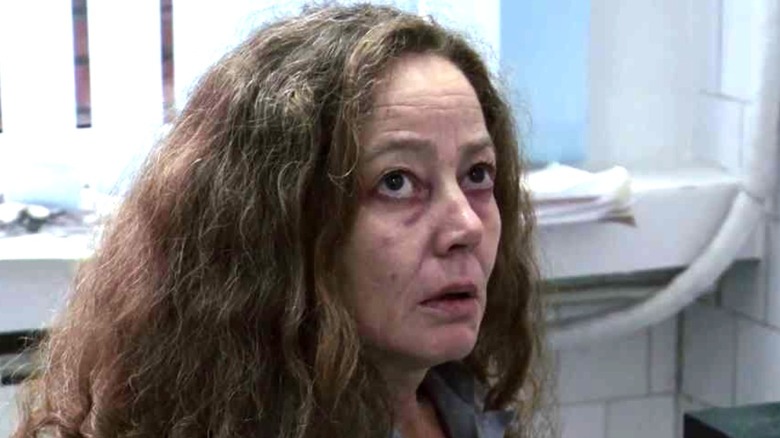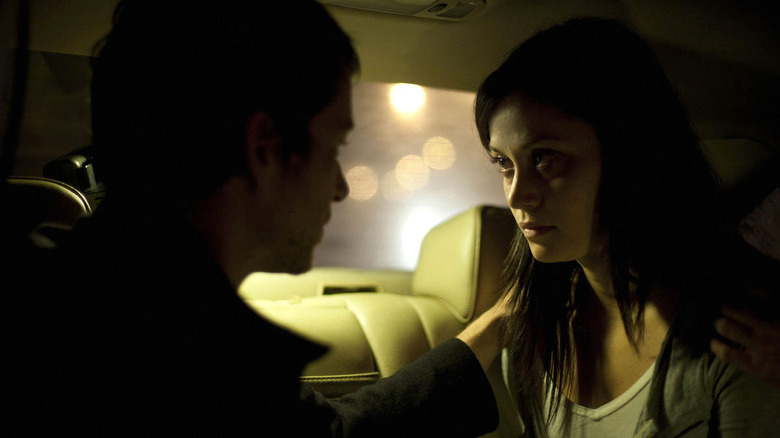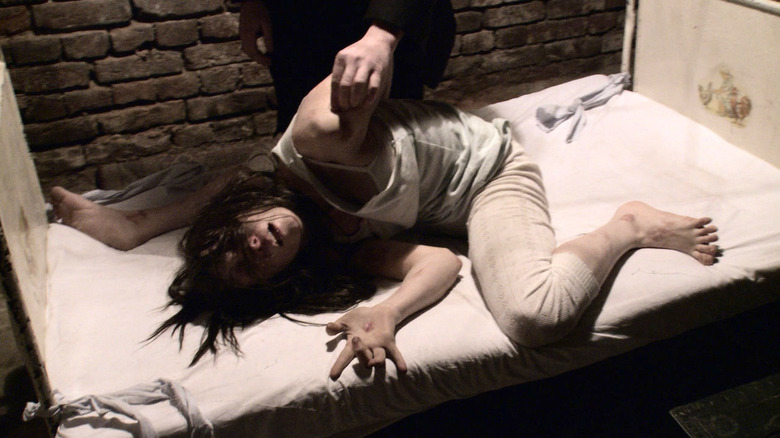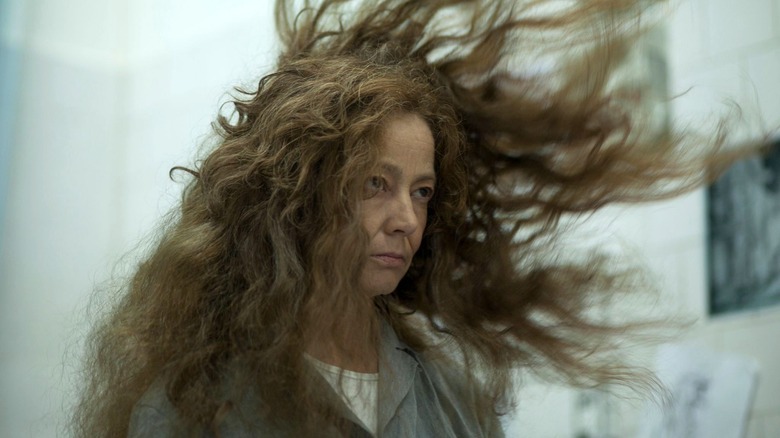The Devil Inside Ending Explained
In 2012, following the trend of found footage documentary-style horror films, Paramount Pictures came out with their own entry with "The Devil Inside." The film stars Fernanda Andrade as Isabella Rossi, a young woman who is looking for answers as to why her mother, Maria Rossi (Suzan Crowley), killed three people many years earlier during an exorcism. Isabella recruits a filmmaker named Michael Schaefer (Ionut Grama) and two priests, Father Ben Rawlings (Simon Quarterman) and Father David Keane (Evan Helmuth), to help her, with Michael documenting everything on camera.
The group travels to Rome to where Maria is being held in a psychiatric hospital, finding her still extremely possessed, and Isabella begs the priests to perform an exorcism on her. They quickly discover that they are in way over their heads, and Maria tries to spread the possessions to Isabella and David. Attempting to get the Church directly involved by showing them their documented proof, everything suddenly turns to chaos, leading to a controversial ending that left audiences very pissed off.
Here's the ending of "The Devil Inside," explained.
What happens to Isabella and the others?
When everything starts going horribly wrong for Isabella and the group, "The Devil Inside" has a sudden twist ending that left viewers underwhelmed and frustrated. First, Father Rawlings goes to Father Keane's house to find Keane exhibiting all the signs of possession, mumbling with blood and scratches all over him. The police arrive, and Keane manages to get hold of one of the officer's guns, putting it in his mouth. Although Rawlings instructs Keane to fight off the possession, Keane can't hold on and he shoots himself.
Next, Isabella starts having a seizure, leading Rawlings and Michael to take her to the hospital. A nurse says she's fine, but then Isabella snaps and kills the nurse. Rawlings and Michael then scramble to get her to a place where she can be exorcised, driving away from the hospital, and in the car Isabella starts taunting Rawlings, saying that she knows about the bad things he's done. She then suddenly attacks Michael, leading him to be possessed as well, and he swerves the car into traffic, leading to both his and Rawlings's death, with Isabella's final whereabouts unknown. That's where the story ends — sort of.
The film ends with a title card listing a website URL
While the car crash is where the story of Isabella, Michael, and the priests seems to end, the film then shows a title card that reads "The facts surrounding the Rossi case remain unresolved. For more information about the ongoing investigation visit www.TheRossiFiles.com." The link, which is now only available through the Wayback Machine, leads to a page with a fake newspaper article about Maria's case, along with a few videos of the possessed woman in her room at the psychiatric hospital.
Director William Brent Bell revealed how this ending came about on the podcast "The Movie Crypt," sharing that a financer suggested the abrupt ending, to which Bell thought "We're doing a tiny, independent film, who gives a f-k? We can stop it. Why does it have to follow a perfect three-act structure?" (via Comic Book). According to the interview, test audiences really liked the surprise ending, but Paramount took it a step further with the link to the website. Bell said, "I remember another one of the execs there was like, 'We're going to break the internet with this.' None of us looked at it as if the movie's not over and you have to go watch this to understand the rest. This was just DVD extras, cut scenes, it was just in addition."
Why did the film receive such hate?
While the abrupt ending might've been accepted by audiences watching "The Devil Inside," the title card seemed to go too far and many felt short-changed, like they were given an unfinished film and had to go to this site to see the rest. The film got overwhelmingly negative reviews, receiving a 5% on Rotten Tomatoes with 91 critics responding. Summing up the huge backlash, Devin Faraci wrote for Birth.Movies.Death. that "what Paramount and the filmmakers failed to understand was that the title card feels like a cheat ... The movie's ending is the ending, and there isn't some secret reel of footage to be discovered. But by the time anyone discovers that it's far too late – they already hate the film."
It's the idea of having to go to a website in order to find out what happens next that drove the viewers of "The Devil Inside" to hate the movie so strongly. If Paramount hadn't included the website, audiences would've accepted the movie's ending as it is, with some enjoying the sudden twist and others not, like with any found footage horror film. But because the studio was telling audiences that they had to do something more to get the full experience, with the website then failing to deliver anything substantial, well, it's safe to say that a sequel film isn't coming anytime soon.



